Formal garden design – 8 ideas for gardens of all sizes
Formal garden design is an enduring style that can work in gardens large or small, so include some of these key elements for a stunning outdoor space

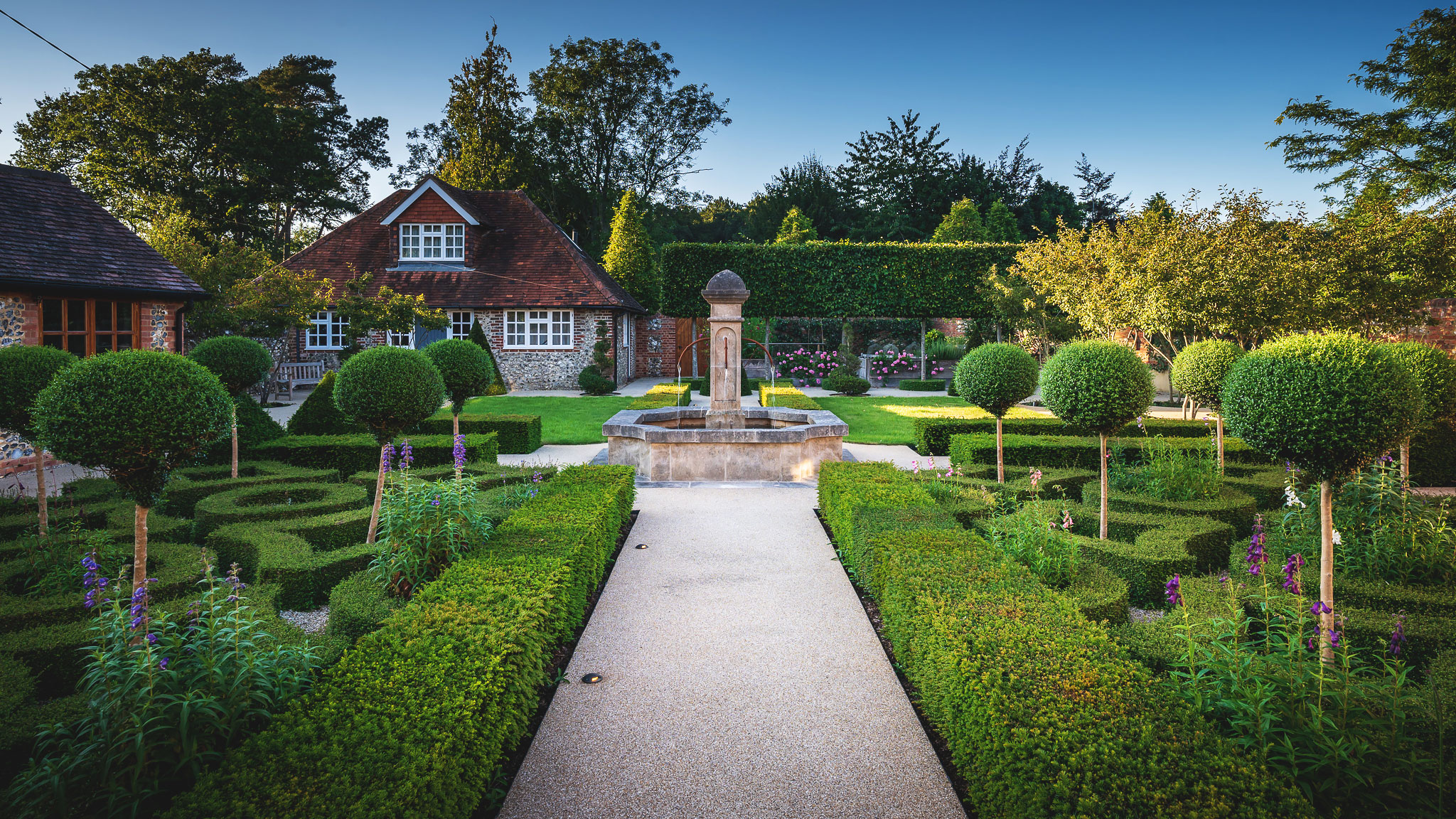
Formal garden design can suit traditional and contemporary outdoor spaces, backyards large or small, and from urban garden to country retreat.
While formal gardens comes in all shapes and sizes, there are certain key features you should include as part of your garden ideas when planning your elegant outdoor space.
There are ways to approach the layout and design when deciding how to plan a garden of this style. Here experts offer their advice on the essentials to get you started.
Formal garden design – elements to include
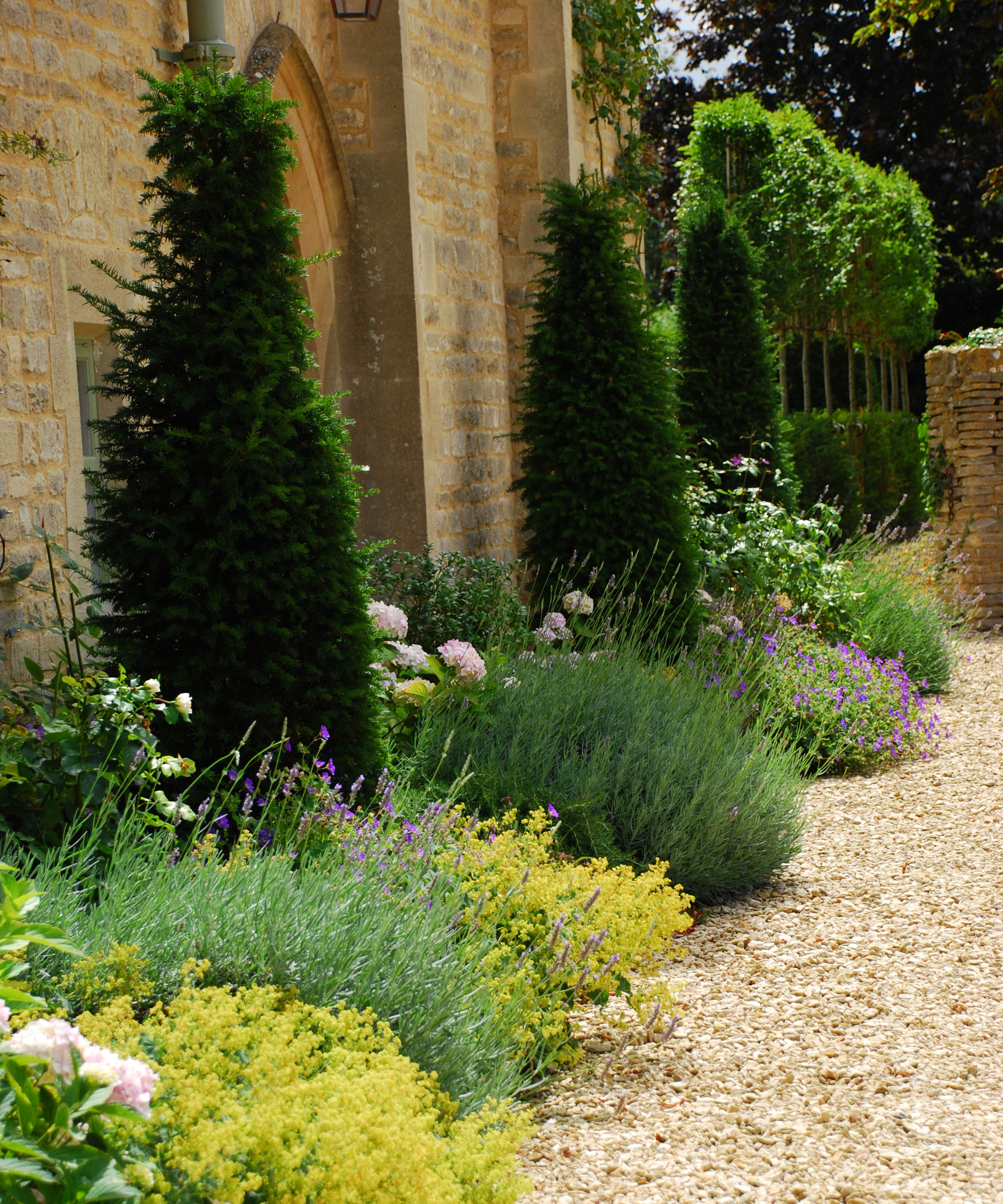
'The layout of a formal garden design should be approached mindfully and take inspiration from the local vernacular, the aspect and site conditions and, of course, what is the desired effect and the maintenance levels preferred,' advises Tina James, head of garden design at Preston Bissett Nurseries.
Although they are often very controlled in their design, a formal garden design still needs to fulfil your needs – unlike the more relaxed approach of lived-in gardens, the purpose of a formal garden should not be lost.
'Pathways still need to be wide enough; seating areas will still need to be designed with proportions that feel comfortable; and the sense of place of the garden is to be encouraged. The gardens themselves may have a strong sense of identity, but they still needs to reflect the locality and sense of uniqueness of the house, through the sympathetic use of planting, materials or references to the wider landscape,' explains garden designer Eliza Gray.
1. Incorporate symmetry
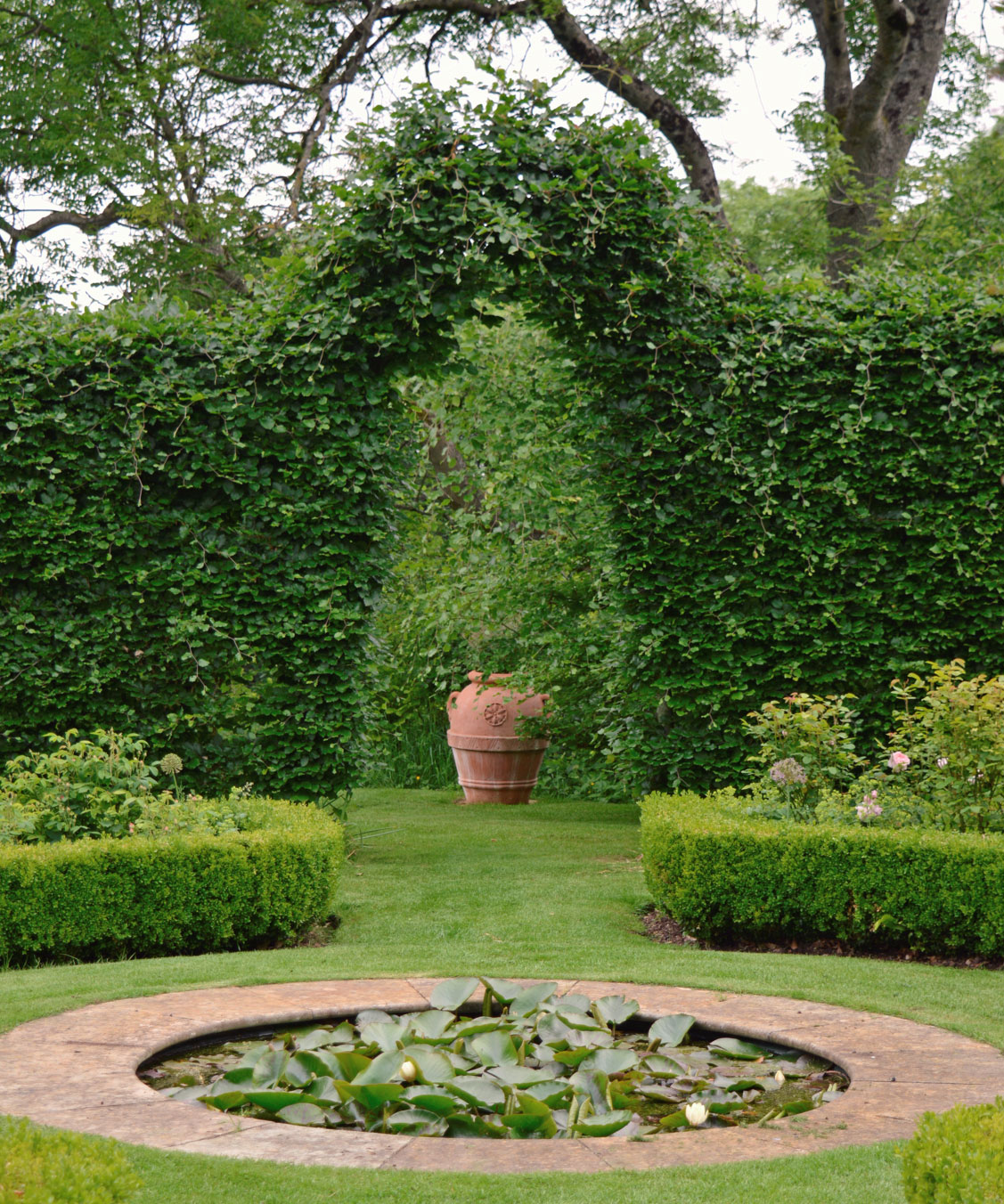
‘Incorporating symmetry into the design, drawing off the lines of the property, is a key starting point for creating a more formal garden space. We usually start by working off the key axes of the surrounding architecture,’ explains John Wyer CEO of Bowles & Wyer.
Design expertise in your inbox – from inspiring decorating ideas and beautiful celebrity homes to practical gardening advice and shopping round-ups.
'Creating a sense of journey through these clear routes helps to define a rhythm that is so important in formal garden design,' adds Eliza Gray.
The pattern used has to fit comfortably within the space available. ‘Look at scale and proportion. I sketch out a layout and illustrate my designs to really see how it will look,’ advises Jo Alderson.
Symmetry is especially important for front garden ideas, but as with all garden designs, it is essential to take the lead from the house, its architecture and the garden’s wider surroundings. 'This will help to create a sense of harmony and flow between the home and garden. A formal garden is usually laid out with a clear structure and strong overall geometry. There is often symmetry to the layout, but not always – an asymmetrical design can add interesting dynamics – but the main design principle to aim for is one of balance,' says James Scott.
A strong architectural style was favoured for Arts and Crafts garden design so you could look to that era for inspiration.
However, while a symmetrical layout for a formal garden design works well, often the garden is not symmetrical. In this case 'clever use of geometric lawns, patio ideas and garden paths help to instil the desired sense of order and formality,’ adds Eliza.
2. Frame with topiary and evergreens
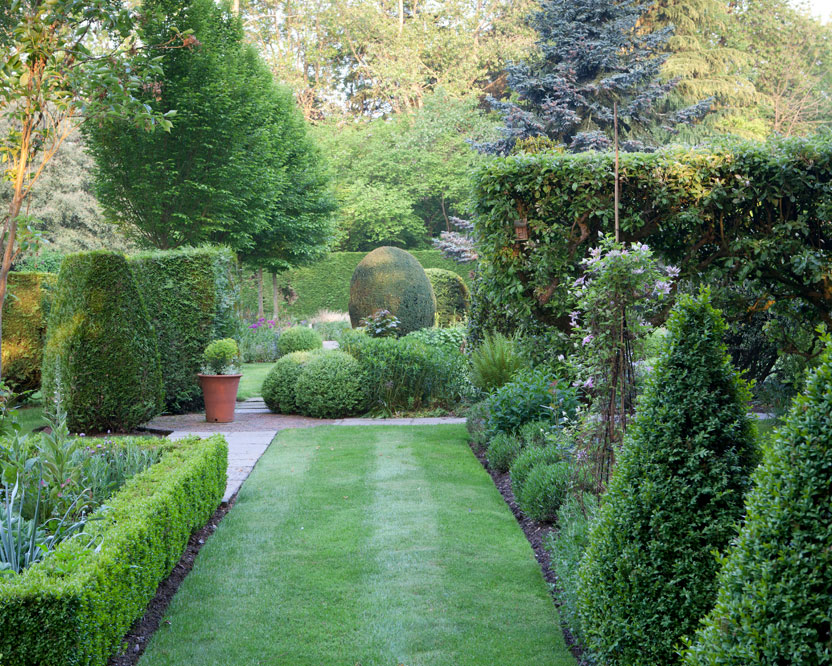
The foundation for a formal garden design 'will be provided by structural plants, such as fast growing hedges, evergreen shrubs and neat trees, which have a strong architectural presence. Good hedging choices include yew, beech and hornbeam,' Says James Scott, principal designer of The Garden Company.
'The architectural qualities of plants can be used to frame a formal garden design, such as clipped evergreen topiary of yew cubes, beech beehives, hornbeam hedges or pleached trees to create greater cohesion and extend the area of formality over a wider area,' agrees garden designer Matthew Wilson.
Due to the issues of box blight, consider alternatives to buxus for topiary shapes and hedging. 'I often use Ilex crenata, osmanthus or rosemary. I have also used Lonicera nitida, although this requires more regular clipping,' explains designer Jo Alderson.
'Topiary shapes used at junctions or in the centre of a design add a classical look and interest in height changes,’ Jo adds.
'Evergreen hedges are more formal than deciduous, especially clipped yew or holly. Laurel would be inappropriate for a formal garden as the leaves are so large is gets shaggy quickly,' agrees designer Rebecca Smith.
3. Plant a parterre

A parterre garden is a classic element of a formal garden design. There are many places you can look for inspiration if you're wondering how to design a parterre garden.
'Strong, simple repeated shapes and patterns are vital for a classic parterre garden,' explains Jo Alderson.
An although associated with traditional schemes, parterres can be given a contemporary edge.
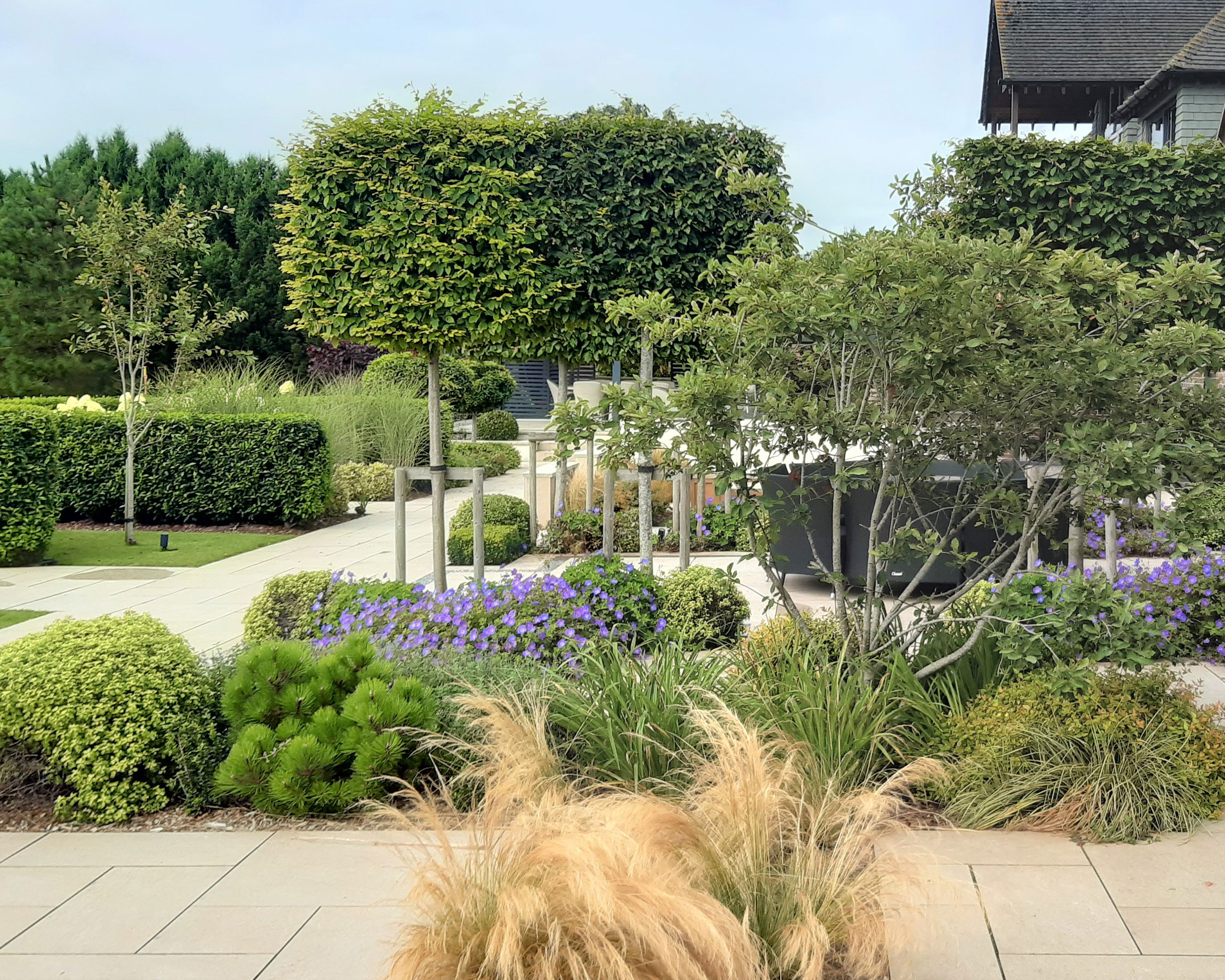
In this more contemporary design above by garden designer Anna Helps, planting includes topiary in the form of Prunus lusitanica and Euonymus japonicus half standards, along with pleached Carpinus betulus.
'Prunus lusitanica evergreen hedging is used to create divisions within the space and as a backdrop to softer planting. Pittosporum tenuifolium has been used in place of buxus to provide a more contemporary option and offers a range of varieties and leaf color to tie the planting together. Geraniums, alchemillas, and crocosmias provide softer planting, while hydrangeas, grasses and hemerocallis provide more structure,' explains Anna.
4. Combine formal with looser planting
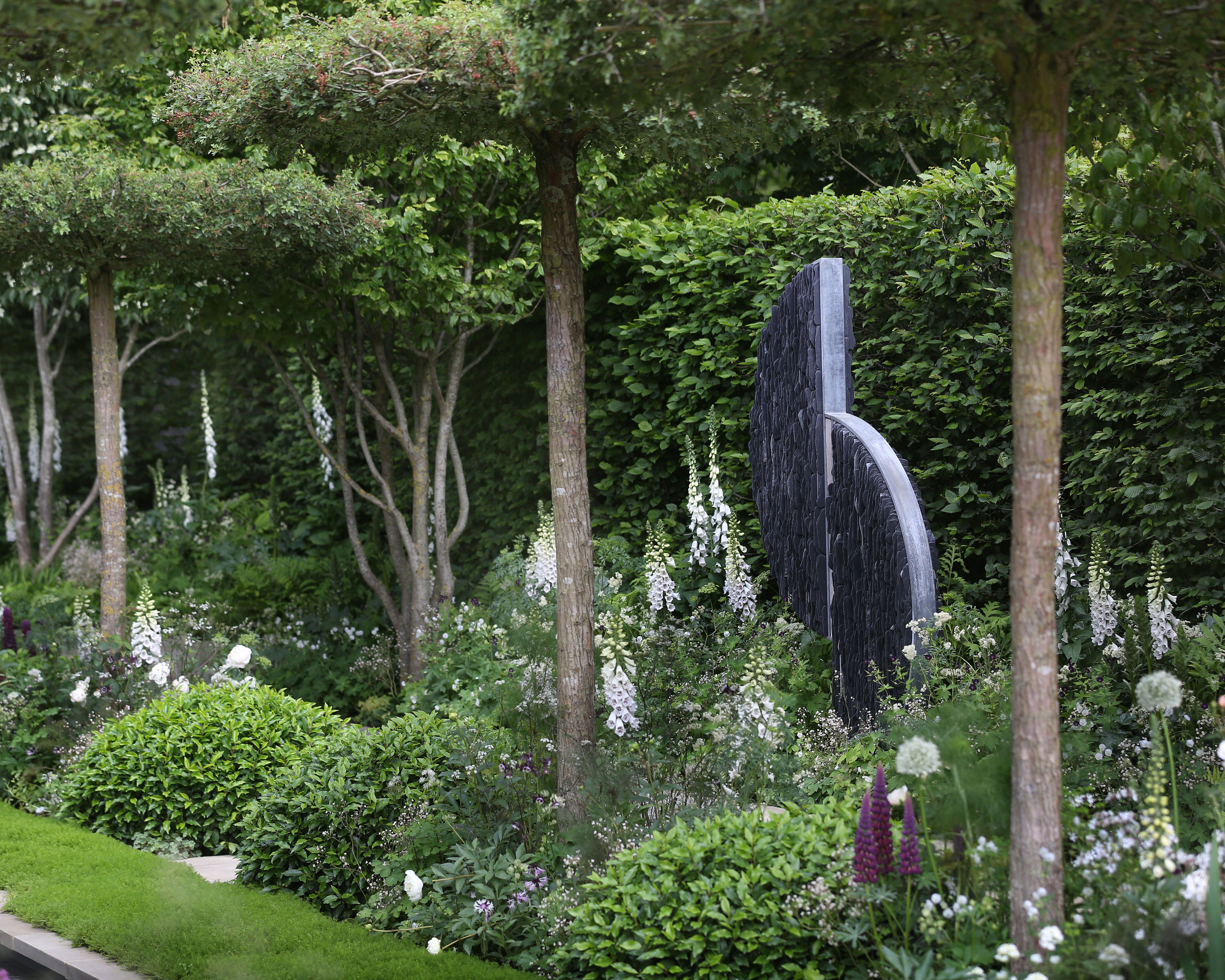
Formality often works best with something informal to push against. 'Allowing a wildflower garden to set seed and grow in front of a clipped yew hedge creates a beautiful and timeless combination. Looser naturalistic planting at the edges helps the transition from the formal space to less formal garden beyond,' says Matthew Wilson.
In the formal garden design above by Richard Miers for Chelsea Flower Show 2022, evergreen domes and clipped trees are interplanted with popular cottage garden plant choices in a simple and restrained palette.
'A formal garden’s planting scheme may be simple but it does not need to be sterile. In fact, there is a great opportunity to add plants for pollinators along with the wildlife-friendly hedges and shrubs as wildlife garden ideas. A garden can become a piece of performing art when it attracts birds, bees and butterflies,' says James Scott.
'The borders can be filled with plants that will soften the ‘rectilinear’ effect. I incorporate as many pollinator-friendly late summer flowers into my schemes as possible. My favourite prime pollinators are salvias, lavender and verbenas. Not only do I enjoy the punch of color they provide from September until November, I also love seeing the diversity of pollinators they attract and support,' James adds.
5. Choose long flowering blooms
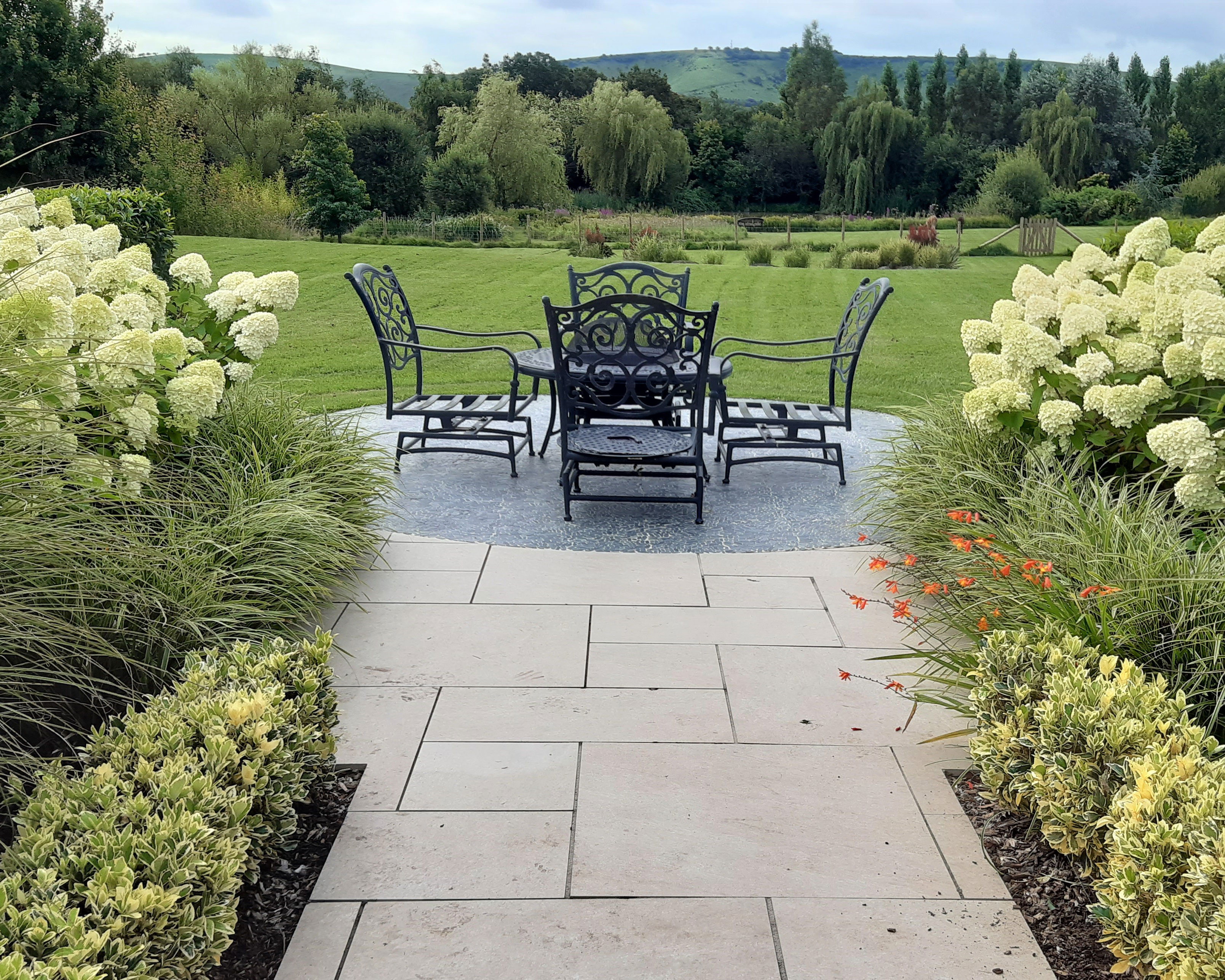
Include long-flowering plants that need little care and many have the benefit of being beneficial to pollinators and wildlife.
'Once a strong green framework has been established, looser planting can be added to extend the textural and ephemeral content which contrasts with the formality,' agrees James Scott.
For infill planting, such as in parterres, 'use perennials with long flowering seasons, such Nepeta racemosa ‘Walker’s Low’, Alchemilla mollis, Geranium rozanne or shrubs, such as Hydrangea arborescens Annabelle. Avoid using plants that have a short season of interest or that flower only briefly with no repetition,’ says Tina James
Opt for low maintenance border ideas when it comes to planting as year round interest is essential for maximum enjoyment of a formal garden design.
6. Keep color schemes simple

When you are planning a garden color scheme for your formal garden design, 'cohesive and simple color schemes better suit a formal style as they have a soothing effect. Formal gardens need not be large, but often are, and large swathes of simplicity create a grander effect with mass planting being easier to care for,’ explains Tina James.
Using a restricted color palette in a formal garden is very effective, such as in the design above by Richard Miers. 'Whites, blues and pale purples blend seamlessly and create a soothing effect. Jarring colors tend not to be used in more formal planting schemes, and variegated leaves are used sparingly,' says Rebecca Smith
Green, in all its shades, is often the backbone of formal designs, and white garden ideas perfectly suit this style. 'However, color in all its glory can be found within a formal garden – it’s more about restraint in its overall usage rather than the specific color palette chosen,' explains designer Anna Helps
Repeating colors and plants within the garden gives a sense of cohesion and adds to the formality.
'The beauty of formal garden design is that the planting really depends on your personal taste. Traditionally, the planting colors are usually muted pastels. However, you could also have a formal garden full of bright red roses. We tend to keep the palette as simple and restrained as possible,' says John Wyer of Bowles & Wyer.
7. Choose complementary hard landscaping
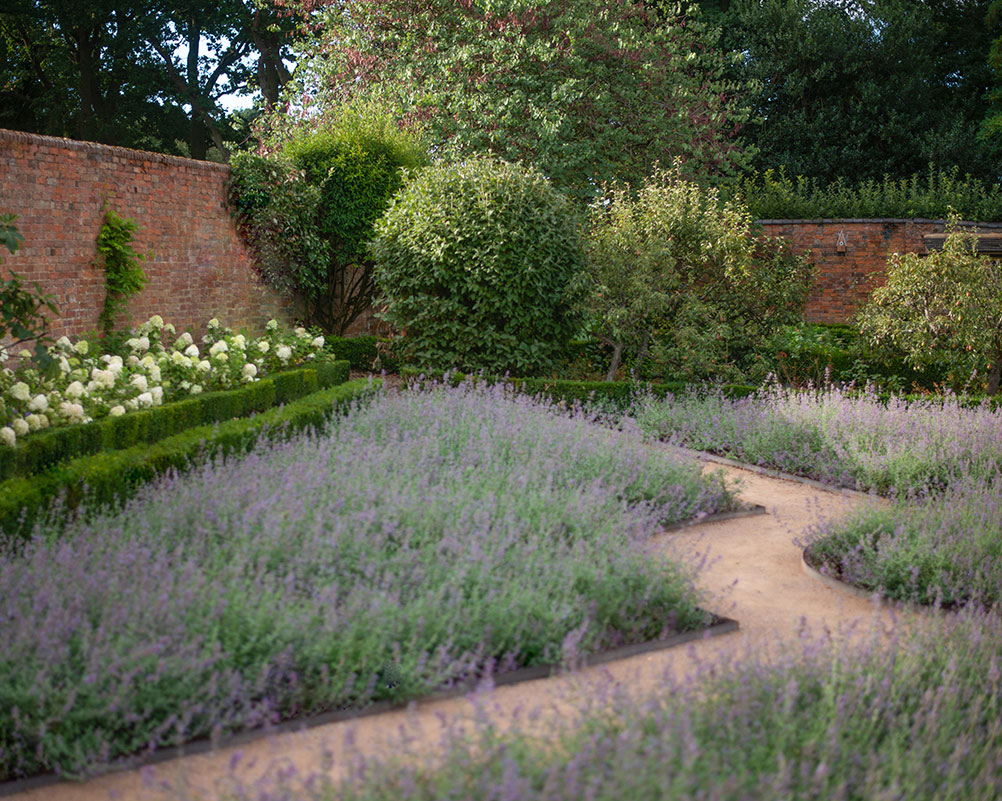
Materials used for backyard landscaping in a formal design need to be carefully considered so that there is an element of continuity from the house to the garden.
'Each material needs to be carefully chosen to be sympathetic to the period of the house and its architecture. For older properties, a local brickworks or quarry may be able to provide matching materials, or at least products that are vernacular. A sense of harmony can also be achieved with houses that have undergone modernisation – you might use some of the same floor tiling for a patio adjoining a recent kitchen extension. As a broad design principle, try to avoid having more than three different hard surface materials underfoot,’ explains James Scott.
Choices may range from bricks used for edging or for pathways, porcelain patio steps, natural riven stone paving slabs, compacted gravel for pathways, and crunchy shingle in courtyard garden areas.
'One trick that we often use is to take very traditional materials, such as brick, York stone, steel and timber, and then use them in a contemporary way, or at least with simplicity and restraint. This helps to keep a sense of formality, but adds a more modern touch to the aesthetic,' says John Wyer.
'While natural stone and brick paths may typically be associated with a formal garden, a far more varied palette of hard landscaping can be utilised to give a modern feel to a formal scheme. A formal garden does not need to result in a traditional design,' adds Anna Helps
8. Include focal features

A formal garden design is likely to include focal points, such as a water feature idea, garden fountain, a sundial or yard art framed by planting, as in this garden design by Helen Taylor Garden Design.
'Planting schemes in formal gardens often frame such focal points, and frame views across the garden or out to the wider countryside where possible. Elegant benches or garden seats will be set into the planting with a good viewpoint across the ornamental space,' says James Scott.
What is a formal style of garden?
A formal style of garden has an emphasis on balance, symmetry, repetition of planting, good structure, and strong lines. These can be geometric or curved in the design, such as with parterres, but should be clear and well defined. Key features include topiary, an evergreen backbone, sculpture and focal points. Statement feature plants can also contribute to the architectural presence of a house.
repetition of planting, good structure, and strong lines. These can be geometric or curved in the design but should be clear and well defined.
'The layout should tie back to the house and be able to be read easily from within the building, especially from the upstairs windows,' says designer Rebecca Smith.
What plants are used in a formal garden?
Evergreen plants for the structure are essential, as is year round interest. Topiary shapes add a classical look, while seasonal infill plants are often chosen for their long flowering properties. The color palette is kept simple and restrained.
Rachel is senior content editor, and writes gardening content for homesandgardens.com, Homes & Gardens magazine, and its sister titles Period Living Magazine and Country Homes & Interiors. She has written for lifestyle magazines for many years, with a particular focus on gardening, historic houses and arts and crafts, but started out her journalism career in BBC radio, where she enjoyed reporting on and writing programme scripts for all manner of stories. Rachel then moved into regional lifestyle magazines, where the topics she wrote about, and people she interviewed, were as varied and eclectic as they were on radio. Always harboring a passion for homes and gardens, she jumped at the opportunity to work on The English Home and The English Garden magazines for a number of years, before joining the Period Living team.
